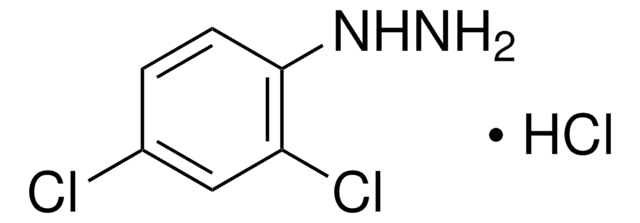D199303
2,4-Dinitrophenylhydrazine
reagent grade, 97%
Synonym(s):
(2,4-dinitrophenyl)-hydrazine, DNPH
About This Item
Recommended Products
grade
reagent grade
assay
97%
contains
33% water (minimum)
dilution
(for analytical testing)
mp
197-200 °C (lit.)
functional group
hydrazine
nitro
SMILES string
NNc1ccc(cc1[N+]([O-])=O)[N+]([O-])=O
InChI
1S/C6H6N4O4/c7-8-5-2-1-4(9(11)12)3-6(5)10(13)14/h1-3,8H,7H2
InChI key
HORQAOAYAYGIBM-UHFFFAOYSA-N
Looking for similar products? Visit Product Comparison Guide
General description
application
Packaging
signalword
Danger
hcodes
Hazard Classifications
Acute Tox. 4 Oral - Desen. Expl. 1
supp_hazards
Storage Class
4.1A - Other explosive hazardous materials
wgk_germany
WGK 3
ppe
Eyeshields, Faceshields, Gloves, type P3 (EN 143) respirator cartridges
Choose from one of the most recent versions:
Certificates of Analysis (COA)
Don't see the Right Version?
If you require a particular version, you can look up a specific certificate by the Lot or Batch number.
Already Own This Product?
Find documentation for the products that you have recently purchased in the Document Library.
Customers Also Viewed
Our team of scientists has experience in all areas of research including Life Science, Material Science, Chemical Synthesis, Chromatography, Analytical and many others.
Contact Technical Service










